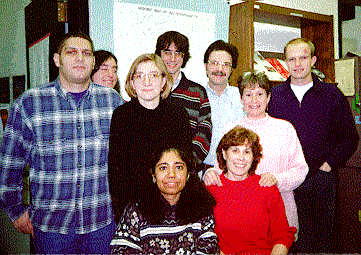
 Professor, Department of Biological Sciences
Professor, Department of Biological Sciences
Telephone: 1/518/442-4324 [Office] 1/518/442-4323 [Lab] 1/518/442-4327 [Center]
FAX: 1/518/442-4767
Email: shub@cnsunix.albany.edu

Our work is proceeding in two directions:
 Origins and evolution
Origins and evolutionHypotheses have been advanced that (1) give catalytic RNA a central role in life's origin (the RNA world) and (2) propose that the structure of contemporary proteins is the result of extensive recombination between introns (exon shuffling). Absence of introns from eubacteria presented a serious drawback to these attractive ideas. Our analysis of the distribution and molecular evolution of bacterial introns will help to resolve whether introns were already present in the common ancestor of all living things.
 Intron function
Intron function
If introns are indeed ancient, bacteria must have lost most of their introns. We assume that introns must provide a useful function in the rare cases where they have been retained. Through in vitro mutagenesis and DNA cloning, we are able to introduce intron-less copies of genes into bacteria. Insight into the role of intron splicing is is obtained by observing differences in gene function and regulation. Genetic analysis of intron structure is used to determine the parameters required for activity of an RNA enzyme.

 Link to NIH Crisp Index for
abstract of NIH grant.
Link to NIH Crisp Index for
abstract of NIH grant.
 Bio 212 - Genetics I
Bio 212 - Genetics I Bio 214 - Genetics II
Bio 214 - Genetics II Bio 314 - Bacteriology
Bio 314 - Bacteriology Bio 315 - Bacteriology Laboratory
Bio 315 - Bacteriology Laboratory Bio 524 - Molecular Biology
Bio 524 - Molecular Biology Bio 537 - Molecular Genetics
Bio 537 - Molecular Genetics